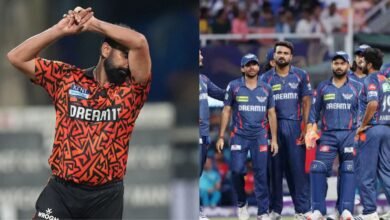
The impact of Yuvraj Singh in limited-overs cricket for Team India is priceless. Be it the match-winning knocks in the must-win games at World T20 or the Player of the Tournament performance in the 2011 World Cup, Yuvi’s contribution to Indian Cricket has been immense. While he scored 8701 runs and picked 111 wickets in 304 ODIs, the southpaw made 1171 runs and collected 28 wickets in 58 T20Is. Team India needs a multi-utility cricketer like Yuvraj Singh right now. The legend himself answered the question “Who Will Be The Next Yuvraj Singh For India?” in a recent interview.
Team India is in dire need of a cricketer like Yuvraj Singh
One of the main issues for Team India at the moment is the lack of multi-utility cricketers. There is hardly anyone from the batting order who can roll the arm over. This aspect has made the Indian Team struggle with balance when fielding an XI. Also, the squad is missing a consistently firing, aggressive left-handed batsman in the middle-order. Hence, the debates of the likely candidates to be the next Yuvraj Singh for India have been happening.
Who Will Be The Next Yuvraj Singh For India?
In a recent interview with Times of India
I probably don’t see any left-hander right now in the middle. Overall, we have got some good hitters in the middle. We have got Rishabh. We have got Hardik. I think Rishabh and Hardik together as they play more one-day and T20, they both will be quite a dynamic duo, batting together. You have Ravindra Jadeja coming in. So, these three guys can change the course of the game anytime. Jadeja has improved by leaps and bounds in one-day cricket and T20 cricket.
Talking about his chemistry with MS Dhoni and the lower middle-order slots for Team India, Yuvi added:
The left-right combination is always dangerous, as I and MS Dhoni were. So, I am looking forward to seeing Rishabh, Hardik, and Jadeja bat at the 5,6, and 7 slots.
Advertisement
Yuvi predicts Pant to be a captaincy candidate for Team India
Rishabh Pant has made a strong comeback with both the bat and the gloves in recent months. Highlighting this, Yuvraj Singh said that Pant has got the skills and mental strength to succeed as a skipper. Hence, he predicted Pant to become an India captain in future.




